Breaking the Cycle Anti-Racist Plan: Term 1
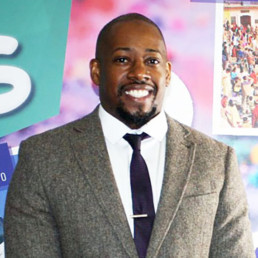
Written by Dwain Brandy
Outstanding teacher, behaviour leader, and Race Equality ambassador. He is on a leadership journey towards becoming a Headteacher.
In 2020, I have had the opportunity to lead an Anti-Racist approach within Oasis Community Learning. The aim was to tackle institutionalised racism in and beyond our schools. Inspired by perceptions of learners, we have introduced a culturally inclusive diet that integrates multiple perspectives to topics within the National Curriculum to make it more inclusive for Global Majority learners and to ensure that whiteness is not the norm by which everything is measured. This will drive the narrative of decolonising the structures in education, focusing on Curriculum Reviews, Staff Training, CPD, Student Education, Community, and Leadership and Management.
With a wide range of different cultural backgrounds and nationalities in England, it is essential for the curriculum to reflect global society and to relate to the increasing global audience. My ethos is to implement a cultural approach that views schools through the perspective of its learners, where the intention is to challenge and change attitudes of society to accommodate an inclusive multicultural community within all schools across the UK.
It has been a challenging start to the school year, due to Covid-19 and limited time capacity to facilitate the project, where the majority of the work was completed outside of the school hours. Despite this, I’m proud to report that significant milestones have been achieved in the first term.
Curriculum Review and Adaptation
To implement an Anti-Racist, anti-oppressive and culturally inclusive diet that integrates multiple perspectives to topics within the National Curriculum to make it more inclusive for Global Majority students
- Audit the cultural diversity of each POS – are each POS representative of different cultures across the five years of study.
- Audit the teaching and learning through an Anti-racist leans using the NEU anti-racist framework
- List of industry professionals , coaches and mentors that could be used for interventions via the list the race trust (launch term 2)
- Initial meeting with Black and Global History trail, in conjunction with the UOM and the Heritage fund. UOM will find local trail blazers for core subjects (Maths, English and Science) with the aim of including these within the lessons. https://www.heritagefund.org.uk/hub/107833/news?page=9
- Review the PSHE curriculum based on the feedback from students
- Anti-Racist training in conjunction with Kids of Colour and resources provided by theracetrust.org and MUSA to provide a framework lessons and a framework for the lessons
- Opportunity to discuss issue relating to race, politics, culture and identity with teaching staff chairing the conversations , addressing any misconceptions
- Diversity day, launching an racist agenda at oasis academy media city (rolled over to term 2)
- Ensure that all cultural events are included in the calendar- for example refugee week, Diwali, Eid, Chinese new year, Wind rush day . Robust plan for Black History Month. Use the OCL equality and diversity calendar as a framework for upcoming events.
- Website, School Newsletters, Photos around the academy, class rooms,
Staff Training and CPD
Staff to become diversity champions, becoming experienced in an anti-racist and anti-oppressive pedagogy
- Build in education of diversity into the yearly CPD programme.
- Deliver a session on being diversity champions as staff
- Anti-Racist Working party group (meeting termly)
- Kids of colour Anti-racist training (Booked in for half term 2)
- MUSA training introduction with all staff (Booked in for half term 2)
- Breaking the cycle anti-racist training launch DBR
Student Education
Targeted interventions for Black and Global majority students
Review the area of concern (e.g. Careers / subject area) that needs intervention.
- Subject specific interventions
- Weekly / Fortnightly 1:1 tutorials with the university of Manchester and Aim Higher for Black students interested in Optometry, Dentistry and Physics. Following students to be allocated a community mentor to hold them accountable (next term)
- Regular meetings with students that have been involved in racist attacks on other students. Far right extremism / anti-racism interventions Small little steps anti-racist training https://smallstepsconsultants.com/
- Follow up Interventions focused on the impact of Hate Crime via The race Trust / Kids of colour
- Student ambassadors. Focused on an anti-racist approach and community cohesion via the race Trust (Next term)
- Student voice (Half Termly Termly)
Leadership and Management
Critically Review existing school policy through the lens of Black and Global Majority Learners
- Racist incidents is 3 days in Internal exclusion that could lead to a Fixed Term Exclusion
- Return to school meeting with parents and SLT
- Incident is referred to the police, social services
- Repeat offenders will be Fixed Term Excluded
- MUSA anti-racist course 6 week course to be completed
- Amended Anti-Racist section in the home school agreement for parents and staff to sign
Community: Term 1
- Weekly meetings with the community strategy response team
- Collaborations with local anti-racist organisations (e.g., Anne Frank Trust, The Race Trust, Kids of Colour)
- Weekly meetings with the community strategy response team (Neighbourhood development officers, Salford Youth Service, Local Agencies focused on online safety , Crime and Anti-Social Behaviour Update from the local PCSO’s)
Next Steps
- Review existing performance management content and include a target aligned with becoming an anti-racist school
- Audit of racial indents sanctions and restorative interventions
- Name Blind recruitment process when appointing of new staff
- Positive discrimination focused on the recruitment of Good/ outstanding BGM practitioners
- BGM representation on the OCL equivalent of the Board of governors
- Clear recruitment to leadership progression for BGM teachers
How to Talk with Children and Young People about Race and Racism
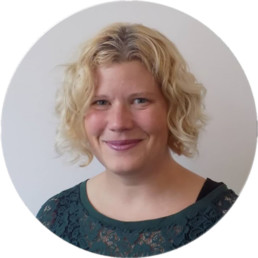
Written by Sarah Soyei
Head of Strategy and Development, EqualiTeach
The murder of George Floyd at the hands of a white police officer and the subsequent protests against systemic racism and oppression will be impacting heavily on children in the UK.
Children will be encountering information via the media, family and friends. There can be a temptation to try to shield them from complex and difficult issues, to turn off the television and shut down conversations. However, even young children will have often absorbed more than adults realise, and older children will be encountering disturbing images and text on social media. All need space to interrogate their thoughts and feelings.
Some tips for talking about race equality and racism are outlined below:
Start from a Young Age
There can be a belief that young people don’t notice difference and that speaking about diversity and race will introduce issues where they had not previously existed. However, in reality, small babies are aware of differences in skin colour and children as young as three start to use racial cues as a basis of categorising people. Talking with young children about diversity will help them to value differences and reject prejudice and develop positive attitudes about themselves and people unlike themselves.
There are lots of lovely board books which introduce the ideas of celebrating difference such as: Everywhere Babies by Susan Meyers, which has beautiful illustrations by Marla Frazee showing babies doing all the things they do best- sleeping, laughing, playing, crawling, and which represents a wide array of different families.
Ensuring that there is a diverse representation of people in books, toys and games, such as dolls, jigsaws and dressing up items introduces children to diversity and creates opportunities for conversation.
Promoting Race Equality is not about being Colour-blind.
Someone’s skin colour is a signifier of their history and a key part of their identity. As Kerry Washington says:
“I’m not interested in living in a world where my race is not a part of who I am. I am interested in living in a world where our races, no matter what they are, don’t define our trajectory in life.”
If adults avoid speaking about difference, then children can erroneously grow up believing that it is rude to mention someone’s skin colour.
Don’t Silence Children’s Questions
Don’t give a negative message by trying to silence children and not answering their questions. Young children are naturally curious about the world and differences between people. If children are told to be quiet and the subject is not something to be talked about, they will draw their own conclusions that being different is somehow embarrassing or shameful. Use questions as an insight into the child’s world and an opportunity to open up conversations.
Talk about Similarities and Differences
Allow children the opportunity to discuss differences between people: skin colours, hair textures, facial features, temperaments and abilities, family structures and relationships, but also focus on similarities. Across ethnicities, countries and cultures there are things we all share: our common humanity, our concern for others, our need to be loved, our need to eat and sleep and play and have a home and clothes – all of which can be different and valued in their different forms. Avoid stereotypes and generalisations; remember there is huge diversity within every ethnicity, country and culture.
Start from Where Young People are
Young people need the opportunity to explore their emotions and learn coping mechanisms. Providing a safe environment to help children talk about issues and understand what is going on will help them navigate any confusion, distress and worries they may be experiencing.
Ask children open questions about what they know, what they’ve seen and what questions they have. This allows you to pitch the conversation at the right level, avoiding over-complicated explanations, which could increase worry and confusion, or pitching it too low and leaving out important issues because you think that children aren’t aware of them.
Avoid exacerbating fears and upset by using graphic images or images of people in distress. If children are focussed on a specific incident or event, broaden the conversation, ask them questions such as ’How do you think the people were feeling?’ and ‘What do you do when you think something is unfair?’. Help them to understand the wider societal context of what is happening to allow them to build empathy and understanding.
Challenge Stereotypes and Prejudice
Sometimes children may say something which is biased or prejudiced. Use open non-judgemental questions, such as ‘What do you mean by that?’ or ‘What makes you say that?’ to find out what they meant by the statement and allow them the opportunity to question what their opinions are based upon. Provide them with an alternative viewpoint and help them to recognise stereotypes and explore the difference between neutral and emotive language, fact and opinion.
Never leave racism unchallenged, use incidents as an opportunity to educate.
Promote Positive Action
Young people can feel helpless in the face of big world issues such as racism, but there is lots that they can do to create positive change, including raising or donating money, challenging racism and raising awareness amongst their peers, sharing content on social media, creating films and blogs, and writing to newspapers and MPs. Young people have a voice and should be empowered to use it.
You Don’t Need to Have all the Answers
Take the time to read and educate yourself as much as possible, but there will always be times where you don’t know the answer to a question. Admitting that you are unsure is a much more positive approach than imparting information which is inaccurate. You can research answers together, which not only ensures that children are receiving accurate information but also teaches them the value of research and how to research for information in a safe and effective way.
A selection of books which provide a platform for discussions on racism are outlined below.
My World, Your World by Melanie Walsh
Age 1-3
A brightly coloured book celebrating the similarities and differences between people.
What’s the Difference? By Doyin Richards
Age 3-5
A book about seeing and celebrating difference and recognising that the most important things are what we can do together as friends, families and communities.
A is for Activist by Innosanto Nagara
Age 3-7
A colourful ABC board-book full of rhymes, and pictures with a cat to find on every page, this book helps to raise children to be conscious of activism, environmental justice, civil rights, LGBTQ rights and more!
Racism and Intolerance by Louise Spilsbury and Hanane Kai
Age 5-8
A beautiful picture book that explores what racism and intolerance are and how they affect children all over the world
Viola Desmond Won’t Be Budged by Jody Nyasha Warner and Richard Rudnicki
Age 5-9
The true story of Viola Desmond who refused to move from her seat in a movie theatre in Nova Scotia in 1946. She was arrested, charged and fined, but continued to fight for equality, inspiring others and raising awareness of the injustice of racial segregation. An important story written and illustrated for young people.
What is Race? Who are Racists? Why Does Skin Colour Matter? And Other Big Questions by Claire Heuchen and Nikesh Shukla
Age 10-13
An accessible exploration of the history of race and society, being. It looks at belonging and identity, the damaging effects of stereotyping, the benefits of positive representation and how to protect against and stop racist behaviour.
A Change is Gonna Come by Various Authors
Age 13+
This book is a collective of stories and poetry from Black, Asian and other Minority Ethnic authors, all on the theme of change. The stories are as diverse as their authors!
The Hate U Give by Angie Thomas
Age 13+
Inspired by the Black Lives Matter movement, this is a powerful and gripping story of a teenage girl’s struggle for justice.
Noughts and Crosses by Malorie Blackman
Age 13+
A series of books exploring race, superiority and love through a world where black people (Crosses) have superiority over white people (Noughts).
“I will not be erased” by gal-dem
Age 13+
gal-dem is an award-winning online and print magazine written by women and non-binary people of colour. “I will not be erased” is a collection of essays from gal-dem writers, using raw material from their teenage years, to share stories of growing up as people of colour.
These books specifically focus on race equality and racism. However, it is vital that this is not the only form in which young people encounter black people in literature. Make sure that children and young people have access to a wide array of literature which includes black histories and stories. Some top tips for building a diverse and inclusive bookshelf:
- Consider the authors: do you have books by a range of authors with different characteristics, backgrounds and experiences?
- Consider the protagonists: are the main characters in your books all white? Do they fulfil stereotypical roles?
- Consider the story: will this story bring something new and different to the child reading it? Will it share a new experience, teach something about a different culture or country, or alternatively will it help to celebrate an important part of their own identity? A great bookshelf will offer all of these!
Some great independent book sellers and online services who stock and recommend a diverse range of books:
Knights Of: a bookshop and movement to support diverse authors
Jacaranda Books: an independent publisher ‘with a dedication to creating space on the bookshelf for diverse ideas and writers.’
Little Box of Books: a book subscription service delivering boxes of inclusive and representative books for families and schools.
Letterbox Library: A children’s booksellers celebrating equality and diversity.
Tamarind Books: Now part of Puffin books, Tamarind has championed diversity in children’s publishing since 1987, helping to make sure children of all cultures and ethnicities have the chance to see themselves in stories and books.
The Willesden Bookshop: Supplies multicultural books for schools and libraries.
EqualiTeach delivers workshops for young people and adult training on all issues of equality including on race and racism. Find out more here or get in touch.
Adapted and Inclusive sport. It’s not just about disability
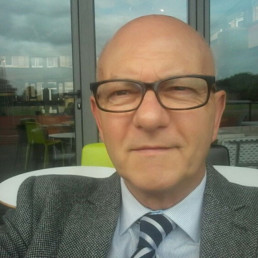
Written by Steve Morley
Inclusion teacher, Activity Alliance Tutor, Author, Educator, Public Speaker, and Mental Health Advocate.
I passionately believe in Inclusion. First and foremost, rather than an assumption that able bodied people do one thing and people with a disability do something else. Inclusion is very much “my thing” and one way I try to achieve it is through sport.
My vision is to see more disabled and able-bodied people playing sport together and my mission is to bring mixed ability events and inclusion to every school sports day.
In conversations with heads of sport from a number of schools, I’ve been discussing how some children find sports challenging. Working in schools my coaches and I use inclusive and adapted activities to encourage children to explore their attitudes about the nature of sport i.e. winning, taking part, competition and having fun. Many of the teaching staff applaud what we do. I often hear comments like, “I think it’s great that you are encouraging disable children into sport”, “Brilliant, disabled youngsters should have the same opportunities as other children”. However, I occasionally hear a remark along the lines of “It’s not really suitable for us since we don’t have any disabled children at our school”.
I believe that adapted and inclusive sport is not just appropriate for traditional models of disability. The definition of Inclusion is – the action or state of including or of being included within a group or structure.
So, what about the “non-disabled” child or young person who is un-coordinated, overweight, too tall, too small, not strong enough, not quick enough, can’t seem to hit the ball, kick the ball, catch the ball? A recent survey about why some people hated sports listed at number five that – it reminded them of childhood trauma. Their argument being that a bad youthful experience with sports affected them permanently.
I’m sure we all know people who dreaded sports days and would have given anything to avoid the PE class. By using adaptive, inventive and inclusive activities we can often engage with children who are not drawn to, or naturally good at, mainstream and traditional sports.
To reiterate my vision, I am seeking to achieve not just more disabled and able bodied people playing sport together but to bring mixed ability events and inclusion to every school sports day; I want all children to experience the joy that taking part in sport can bring, the connections that can be made, the sense of accomplishment and the feeling of being part of something bigger.
Most importantly, I want to take the dread out of sport and by making it “Inclusive”, make it FUN for all!
A Rare Breed: The Lesser-Spotted Black Male Teacher
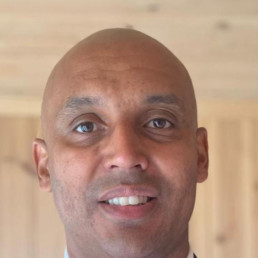
Written by Adrian McLean
Education leader | Former Headteacher | Governors for Schools Trustee | Positive Disruptor
Diversity and equity is something that anyone reading this, I am sure wholeheartedly believes in, visualises and works towards creating in our education system and society. I am an advocate of all of the protected characteristics, and work to challenge the systemic prejudices we all face. My views are through the lens and experiences of a Black male in the English education system. For clarity, when I refer to Black in this blog, I am specifically talking about my Black Caribbean and my government defined White/Black Caribbean heritage. This blog shares some thoughts and musings on why there are so few Black male teachers.
Firstly, we need to examine some statistics to understand how stark the reality is. The latest School Workforce data statistics (2019) show there are approximately 500,000 teachers in England. Using my Black Caribbean descendancy as a marker, the stats say there are 4889 teachers who identified in this category. Using the more accurate descriptor for my background – White/Black Caribbean- this figure comes in at 1741!
When interrogating further, there is no breakdown of how these figures are then represented by gender. What I can tell you from the data provided, is there are approximately 379,000 female teachers compared to 121,000 male teachers. 4889 Black Caribbean teachers… 1740 other White/Black Caribbean teachers… 6630 (quick maths!) people who identified as appearing similar to me, of a population of 500,000 across 23,323 schools? Additionally, that figure represents both male and females! What? Really? I am not a genius, however, it points to the probability of there being very few male Black Caribbean or White/Black Caribbean teachers. Couple this with my 20 year career in West Midlands schools where I have worked alongside less than a handful of males who look like me.
If you have heard me speak, you will have heard me talk about the importance of visible role models to our young people and ‘usualising’ the presence of all people from protected characteristics in positions of authority. Representation matters. It matters to all children! My #DiverseEd Pledge from 14/06/2020 is to continue to help, support and grow the number of Black males (from all denominations of Black) in teaching and Senior Leadership. However, 7 months on, the realisation struck me… are we treating the symptom rather than the cause?
The London Development Agency commissioned a study (2004) on the educational experiences and achievements of Black boys in London schools 2000-2003, the authors of the report called for an increase in the proportion of ‘Black Minority Ethnic teachers within the educational system’. Logically, this makes sense… except right now, this is, in my opinion, a pipedream. Let me explain my theory. The experience of Black Caribbean and White/Black Caribbean male students in school is well documented. We all know about the vast over-representation of these young men in being permanently excluded (latest figures are 0.25 and 0.24%, respectively) are only exceeded by students from a Gypsy Roma background (0.27% which is also a travesty!). To me, it is obvious that the lack of Black Caribbean and White/Black Caribbean males in the profession directly correlates to the negative school experience countless reports and reviews have revealed. It is part of one big negative cycle which drives Black males away from education.
From Bernard Coard’s (1971) study of how the British education system failed Black boys or the government sponsored Rampton Report (1981), which recognised the existence of racism in the British education system, through to the work of Maud Blair (2001), is that a high proportion of Black boys find their educational experience to be negative. All of these studies’ findings were perfectly brought to life in Small Axe: Education by Steve McQueen, where he made the audience feel the very real process of placing Black Caribbean children into special schools because they were disruptive or had not scored well on a ‘I.Q. test’. Education has been doing the same thing for 50 years. I’ll say that again… FIFTY YEARS! Einstein said the definition of insanity is doing the same thing over and over again and expecting different results.
Ofsted (1999) stated Black boys in primary school achieved close to the average on entry to secondary school. However, by the end of year eleven they became amongst the lowest achievers. This mirrors my own experience at secondary school… labelled with low expectations, despite being smarter than your average. Frustratingly, we are still no further along a quarter of a century later! So what changes? Is 11 the age when Black males transform from being capable, engaged students, into troublesome tyrants? Or are other factors at play?
Trying to specifically recruit more Black male teachers is going to be difficult when the school, and education experience is, on the whole, not a pleasant one for this demographic. When I ask my school friends and acquaintances about school, they tell me it was the worst time of their life. They didn’t fit. Told they were trouble. Told they were stupid. Labelled. Written off. Put in their place. They say ‘Why would I want to be anywhere near a system that does that to our people?’ The roles offered in schools to this demographic are stereotypically of a pastoral nature. Roles that often leave you helpless in being able to help those you set out to.
You may ask, well how do we improve the educational experience for these young people? There are many tributaries that are required to come together to form the ocean that is Diversity and Equity. Diversifying the curriculum, real measures being put in place to address socio-economic disadvantage, acknowledgement and extensive work on unconscious bias to address misconceptions of behaviour and attitude issues. Work with our communities around toxic masculinity, a stereotype that is persistently put forward and perpetuated in Black communities. This is not an exclusive list, there are many more tributaries that also flow into the mix.
My Jamaican grandfather would always say “Heel nevah go before toe”, and as usual, his wisdom seems apt in this situation. For us to be able to walk tall and true, we must place the heel first (school experience) before we place the toe (more Black male teachers in the profession). Improve the school experience, the perception of education for Black males will change. Once the perception changes, education becomes an opportunity rather than a threat. The realisation of that opportunity is what I believe will be the change I, and so many others, so passionately work to see.
On that note, I will leave you with 2, some may say rhetorical questions, and a third to ponder more deeply:
Are we trying to treat the symptom rather than the cause?
Do we need to remedy the experience of school for these young people to break the cycle?
How can you be part of influencing this change?
References:
Blair, M. (2001), Why Pick on Me? School Exclusion and Black Youth, Stoke on Trent, Trentham.
Coard, B. (1971), How the West Indian Child is made educationally subnormal in the British school system: the scandal of the Black child in schools in Britain, London, New Beacon for the Caribbean Education and Community Workers Association.
London Development Agency, (2004), The Educational Experiences and Achievements of Black Boys in London Schools, London, LDA.
OfSTED, (1999), Raising the Attainment of Minority Ethnic pupils, London, Ofsted publications.
Rampton, A. (1981), West Indian children in our schools: interim report of the Committee of inquiry into the education of children from ethnic minority groups, London, HMSO.
School Workforce In England, Reporting Year 2019. [online] Available at: <https://explore-education-statistics.service.gov.uk/find-statistics/school-workforce-in-england> [Accessed 16 January 2021].
Diverse Educators: A Manifesto

Written by Hannah Wilson
Founder of Diverse Educators
In August 2020, at the end of the first UK lockdown to curb the spread of Covid-19, Bennie and I sat in the sun in my garden, down the road from the school that we had started together a few years previous and we drafted a proposal for a book. We had met through Twitter and #WomenEd 5 years before that, we were both English teachers and secondary school leaders, we are both feminists who are passionate about diversity, equity and inclusion in the school system. When I secured my headship, Bennie applied to my Deputy Headteacher, and led on our values-based curriculum with diversity and equality embedded across it. A regular topic of conversation in the time we worked together was about the books we were reading and the books we were going to write, individually and together. We knew it would happen one day!
Many of you will know that Bennie is the reason Diverse Educators was started, she came to my office one day and shared her frustration with me at having to split herself multiple ways to go to different events each weekend to explore her intersectional identity. I checked my privilege as a heterosexual, cisgender, able-bodied white woman and reflected on this. We discussed the idea of hosting one event and inviting the communities from #WomenEd, #BAMEEd, #LGBTed and #DisabilityEd to come together, at the same time, under one roof to have a joined up conversation about identity. Our inaugural Diverse Educators event was in January 2018, at which #LGBTed officially launched and Bennie closed the grassroots event with a powerful message: ‘Don’t Tuck in Your Labels’.
Fast forward three years and Bennie is now a Deputy Headteacher at an all-through school where she is leading on curriculum and I am working independently as a Leadership Development Consultant, Facilitator and Coach specialising in diversity, equity and inclusion. We launched the Diverse Educators website, with the help of our partners, in the middle of a global pandemic in response to the spotlight on racial inequities, and the amplification of Black Lives Matters, triggered by George Floyd’s murder. At our first virtual event in June 2020, we were joined by over thirteen thousand people.
The world has finally woken up to the need for social justice, society can no longer ignore it and the school system can no longer not prioritise the urgent need to embed the diversity, equity and inclusion agenda strategically into our schools. Bennie has recently published her first book: A Little Guide For Teachers: Diversity in Schools and we are now inviting the #DiverseEd community to lean in and contribute to our book: Diverse Educators: A Manifesto.
Our book will be structured, like our website, around the Equalities Act. There will be ten chapters, one for each of the nine Protected Characteristics (Age; Disability; Gender Reassignment; Pregnancy and Maternity; Marriage and Civil Partnership; Race; Religion and Belief; Sex; Sexual Orientation) with a tenth chapter exploring intersectionality.
Each chapter will have a chapter editor who will work with ten contributors offering a multiplicity of perspectives on the protected characteristic being explored in the chapter. Each submission will be 1200-1500 words long. Each contributor will interweave personal and professional narrative, framed in theory, to respond to current and historic debates. The chapter editor will write the introduction to the chapter to give context and to frame the chapter’s narratives, arguments and provocations.
We are committed to capturing the collective voice of our community and to showcasing the diverse lived experiences of educators. We are keen for Diverse Educators: A Manifesto to be both academic and accessible. You can review the style guide here. We intend for the book to be solutions-focused with high-quality input on practice, pedagogy, people management and policy.
We would love to hear from you if you would like to contribute. You can submit an expression of interest here. Thank you in advance for your time, energy, experience, expertise and support in contributing to our #DiverseEd book, we are looking forward to celebrating the collective commitment and amplifying your voice.
Sequencing a decolonised curriculum: using Picower’s six elements
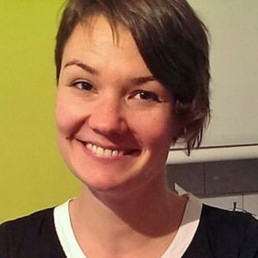
Written by Terra Glowach
Lead Practitioner for literacy and decolonising the curriculum at Cathedral Schools Trust in Bristol
I entered the classroom with the conviction that it was crucial for me and every other student to be an active participant, not a passive consumer…education that connects the will to know with the will to become. ― Bell Hooks
One mistake I’ve made over and over again: teaching traumatic events in history without understanding the need to embed them within a wider, and more empowering, social-historical narrative.
Picower’s work on the six elements of social justice has helped me understand the importance of sequencing, so that
- students do not internalise the trauma of these events, and /or
- see these events as the fault or inevitable condition of the victims’ existence
- nor do these events define a people as powerless, voiceless, or lacking agency
Picower’s work is open source so that teachers can access it. And unlike most EEF research, it is qualitative – looking into case-studies of elementary curriculum sequencing – to examine the ‘how’ and ‘why’ of teaching material that addresses social injustice. The American elementary context is only problematic in the respect that Secondary teachers may need to collaborate across disciplines whereas Primary teachers have more flexibility within their own practice. This limitation aside, Picower’s work is game changing for middle and senior leaders with curriculum development responsibilities.
Her six steps for sequencing material related to social injustice are as follows:
- Self love and knowledge: “provides students with the historical background knowledge to recognize the strengths and resiliency of their communities.”
- Respect for others: “students gain respect for the history and characteristics of people different from themselves. By building on the natural empathy of children, teachers encourage students to care about “unfair” conditions that have affected others.”
- Issues of social injustice: “a critical examination of how identities impact people’s lived and material conditions. Students explore historical and current issues of social injustice, allowing them to identify “isms” and to decide whether they find these “fair.”
- Social movements and social change: “teaches students about how people have fought against oppression through social movements. Students learn that things don’t have to be how they are; unfair conditions can be changed, and students can contribute to that change.”
- Awareness raising: “students engage in activities that increase the awareness of others in their community about the social issues they are studying.”
- Social action: “students have the opportunity to experience what it means to struggle for justice by engaging in social action themselves.”
At Bristol Cathedral, our Decolonising Hub is looking at how we can work cooperatively across all disciplines to ensure these six points are used in an order which empowers students to change their world for the better. We noticed that no 1 & 2 are often combined when we teach any of our subjects as global disciplines. History, English, Geography, Citizenship and PSHE seem best placed to address 3 and 4. Art, Drama and Music seem well placed to contribute meaningfully to no 5 and 6. This year our goal is an exhibit that celebrates student work across the curriculum following Picower’s six steps.
As an example of how to do this in one discipline, our History department addresses this sequence in KS3 by teaching Africa Kingdoms in year 7, the Bristol involvement in the slave trade in year 8, and the Haitian Revolution in year 9. Students first learn about the academic, artistic and economic achievements of African kingdoms before learning about how Black Africans were exploited – so the limited Euro-centric narrative of the white man’s burden is robustly challenged. We also consider the cost of choosing oppression / exploitation over symbiotic trade and collaboration.
With the Haitian Revolution, students understand how an oppressed people were able to overcome tyranny. Black people are not simply represented as unfortunate victims saved by British emancipation, but as having agency and preceding British emancipation with their own by three decades.
To apply a micro-lense to sequencing, I’ve used Picower to think about how I present disturbing context for English texts in single lessons. For example, in the EMC’s excellent collection Diverse Shorts, the story “Brownies” by ZZ Packer addresses white beauty standards and the impact on young Black girls in 1980s USA. I use a video of the doll test to help students understand and empathise with the Black characters in the story.
This video shows several Black children point to a white (as opposed to a Black) doll when asked which is beautiful and good. The moment when Black children each identify themselves as the Black doll afterwards is deeply upsetting, and could serve to normalise these attitudes further if not preceded by content which shows this behaviour to be the likely effect of racist representations in mainstream media – and therefore in error.
So this year I started with the Black Panther’s Black is Beautiful movement in the 60s, and we looked at several examples of Black beauty across film and art (Step 1: Self Love / Knowledge and Step 2: Mutual Respect). Once we had looked at the qualities of these examples and why they were so successful in influencing style, we then discussed their awareness of these movements, and the extent to which Black beauty is mainstreamed in TV, film and advertisements. At this point, I showed the doll test (Step 3: Social Injustice).
Students were just as visibly moved by the doll test as in previous years, if not more so. But in our discussion afterwards, there was less a sense of defeat and pity and more of an understanding that feelings of inadequacy are down to mainstream media, and how race is represented. If Black beauty and excellence were represented more in the mainstream, the doll test might yield different results.
This level of thinking is not only ‘top band’ in terms of contextual analysis, but empowers students to challenge unfair and harmful narratives on the basis that there are better, richer narratives.
Many curriculum designers now recognise the benefits of sequencing knowledge using narratives for long-term memory (i.e. evidenced learning). But Picower’s work is also needed to unlock the agency of students to use that knowledge for meaningful social change.
Why We Need More Diverse Texts in Primary Schools
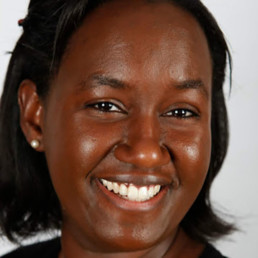
Written by Fabia Turner
Over ten years’ combined experience in education and educational publishing and a member of the Critics of Colour Collective
I first realised I wanted to make books when I was five years old. I’d just bought Mr Greedy by Roger Hargreaves, from a stall in my school’s lobby. The purchase price was a mere 10 pence, and in that brief exchange of money for books, my life changed forever.
As I proudly held that little paperback, I experienced what I can only describe as sensory joy! The pristine shiny cover, the whiff of glue/ink on every page turn plus the satisfying creak from the spine as it inevitably yielded. I knew right then the magical process of creating books was a thing I must be part of.
The problem was I was Black, and Roger Hargreaves was not. Neither were Jean and Gareth Adamson who created the Topsy and Tim series…or Roald Dahl, Eric Carle, Shirley Hughes, Helen Creswell, Ian Serraillier, Michael Bond, Edgar Allan Poe, or Henry Wadsworth Longfellow. These writers dominated my childhood experience and although their texts undeniably developed my literacy skills, they simultaneously dampened my ambition to work in publishing. Lack of exposure to diverse literature in my formative years meant I believed only white people were skilled enough, clever enough, and powerful enough to write and publish books.
It wasn’t until GCSEs, when a radical history teacher introduced me to Toni Morrison, that I was finally exposed to Black authors. I devoured Morrison’s books, but the damage had already been done. My early literary experiences were deeply ingrained in my psyche and I had zero confidence in my abilities as a creative.
Later, my A-level English teacher begged me to apply to Oxbridge, but fear of failure took over, and I refused. After all, in class we’d studied Shakespeare, Hughes, Wordsworth, Larkin, Chaucer…you see where I’m going with this! My parents didn’t envisage a publishing career for their Black daughter either so, eventually, I became a teacher, and the years rolled by. It took 25 years, from the time I bought Mr Greedy, to believe I was just about good enough to attend a publishing interview—and to my complete shock, I got the job!
I tell you all this so you understand the real impact of limiting access to multicultural resources on Black children’s outcomes. The literature we are exposed to when young plays a huge part in shaping our view of ourselves and the world around us. Publishers, educators, and parents need to be vigilant and discerning about the range of texts available to young readers to ensure they develop the self-confidence, self-worth, and drive to pursue their deepest desires.
Which leads me to my next point: quality not quantity. Some Black books hitting the market, from white and Black authors, may check the diversity box but do not meet the high standards required for whole-class teaching. Teachers should not feel pressured to include Black texts—especially those written by celebrities—if they are not up to scratch. (I won’t name names!)
As we’ve always done, regardless of the author’s ethnicity, texts need to be scrutinised for their suitability, otherwise we’ll just start pedalling backwards! The recent misjudged illustration, discovered by a student in one of AQA’s psychological textbooks, points up the need to evaluate all aspects of educational resources.
So far on my book quest, I have encountered some inspirational like-minded teachers who are working hard towards change for the better. I would like to shine a light on some of them:
Calder Valley Books for Change: Amazing early years teacher, Ciara Sturges, has organised a much-needed crowdfunding initiative. Her aim is to raise enough money to buy quality diverse and inclusive books for every primary school in the Calder Valley, from Rastrick to Walsden. Follow her on Instagram and donate to her JustGiving page if you can.
Jamel C Campbell is an early years educator, EY consultant and aspiring children’s author. He has worked in the industry for 18 years. Jamel is one of the UK’s Men in the Early Years Champions/Ambassadors. He has featured on numerous platforms as a keynote speaker and collaborated with many well-respected EY professionals. He stresses the importance of having men in the early years and a balanced workforce. He offers three training workshops for EY teams and settings, based around approaches to practice and staff wellbeing. Follow him on Twitter or Instagram.
Jen Foster is a passionate educator and mentor who has released a refreshingly frank special-edition issue of her e-mag Foster Our Teachers, which focuses on diversity and inclusion in UK schools. It’s called ‘The Inclusion Issue’, it’s free to download and is written for teachers by teachers. It contains a great article about use of multicultural texts in the classroom. Follow Jen on Instagram to get the link to download the e-mag.
Why Decolonise the Curriculum?

Written by Nuzhat Uthmani
Primary Teacher specialising in Global Citizenship and Antiracist education
I posed a survey through @Scotedpolls recently in which 25% of respondents said they did not feel they needed to decolonise the curriculum. Despite the majority of respondents expressing an interest in learning more, this statistic stuck with me. Is it because educators don’t understand what the term means or is it because they don’t see that there is an inherent problem with our curriculum? Let me address both these possibilities.
This time last year, even I had not heard of this term. Lockdown allowed me the freedom to invest in my own professional development and, as an advocate of global citizenship, I learnt more about decolonising the curriculum and its impact on the education system.
Traditionally, much of our curriculum is framed around the successes of the British Empire. It fails to acknowledge the contribution of communities and nations without which the empire would not have been as successful or wealthy as it once was. The stories of what those nations sacrificed as a result has been hidden away for centuries. Decolonising the curriculum refers to the inclusion of those stories, characters and contributions of others around the world that has impacted on the lives that we live today.
The Black Lives Matter movement is seeking to do this by raising awareness of how the UK gained from the slave trade while committing human rights abuses on those communities. However, as educators we must be mindful of not promoting a stereotypical view of certain groups. When we teach about slavery, we should be mindful to also teach about the contribution of Black, Asian and Ethnic Minorities to Science, the Arts and Politics for example.
I’m on a mission now to embed diversity across all the curriculum. It does not mean scrapping everything we know and teaching new topics, instead it involves a mind-shift from educators, ensuring the inclusion of diverse examples and resources in their daily teaching. It means ensuring that one narrative doesn’t dominate out curriculum but a diversity of perspectives and experiences are represented.
So, what about those in our community who feel nothing needs to change? My question to those is how inclusive is your practice? Holding standalone themed weeks is a box ticking exercise we need to move away from and embrace diversity in all that we do. If you rarely use books with characters of colour, if you only use examples from the Western world, then that is not inclusive to those learners who never see their heritage valued within the classroom, so please think again.
If you want to learn more please check my blog on Global Citizenship Education for lesson plans, research, and links to a variety of organisations who are all working towards establishing anti-racist education and can help you get started on your journey to offering a more inclusive and diverse curriculum.
A Reflection on My First Year of Teaching, Inspired by #DiverseEd

Written by Char Aramis
A primary NQT who uses they/them pronouns. Char blogs at transteacher.wordpress.com
Along with many others, I had the joy of listening (and tweeting!) along to the online #DiverseEd event on 17th October. When Hannah Wilson (@Ethical_Leader) asked me to write a blog response, it took me a while to decide on a subject, but we all know that the best way to improve is to reflect on what we’ve done before, so here is a reflection on my first year of teaching through a lens of diversity and inclusion.
I am going to use the things I have learned over the last few months to reflect on the things that I taught and the way that I taught them – specifically topic in terms 1, 2 and 4, because covering everything would make this blog far too long. However, I am still new to this – and to teaching! – so I welcome any additional points or suggestions you may have after reading this.
Because of the topics we studied, most of the issues here relate to race, ethnicity and nationality. For context, we were based in an area in the South West of England where nearly 85% of people were born in the British Isles. Of the rest, a good chunk hail from Poland, with others from Romania, the Philippines, Turkey and Bangladesh making up the rest. In my class, about half of the children had English as an additional language, including children from all of the countries listed above plus one or two others. Roughly two-thirds of them would generally be considered White.
So then, let’s get started. As I’m sure many schools did, we ran a Black History topic at the start of the year. Each year group focused on a significant Black person from history and we studied Nelson Mandela. We also briefly mentioned Martin Luther King Jr and Katherine Johnson in an end-of-term art project, which was displayed in the school for the rest of the year.
Now, if I recall correctly, these had been decided before I joined the school. Nonetheless, I don’t think I noticed at the time that thing that appears strikingly obvious to me now: none of these figures is from British history. Most of them, as is common in our studies of Black history in British schools, are from the United States and Nelson Mandela is of course from South Africa. I wonder if perhaps this is worse: I expect South Africa – a country that many of these pupils may never have heard of – seems much more remote and less relevant to them than America, which they at least engage with regularly through film and television.
We discussed racism and protests and fair treatment, but I certainly lacked the confidence and knowledge to address these subjects in the way they deserved (it was my first ever term of teaching). I do still feel that I would benefit from further training and resources to support this.
If I were to teach Black history as a topic again, I would definitely seek to choose a figure or subject that is more relevant to British history. The Bristol bus boycott or Windrush, for example. If I had to teach Nelson Mandela, I would link it back to racism in the UK around the same time – although we had no official segregation, I could teach about Britain before the Race Relations Act(s) and cases such as that of the marriage between Seretse Khama and Ruth Williams.
Our term 2 topic was extreme weather, specifically tropical storms. We focused on tornadoes and Kansas because we linked this to The Wizard of Oz. There was essentially no representation of any under-represented groups here – focussing for the moment on the topic teaching and not any subjects that are or could be discussed in relation to the book.
In the interests of allowing children to be seen in our curriculum and broadening pupils’ geographical knowledge beyond “the West” (I notice that the National Curriculum for KS2 only requires geographical study of regions of “the United Kingdom, … a European country, and … North or South America”), we perhaps could instead have looked instead at the Philippines, Bangladesh or the Pacific Islands (one child in the class was from Melanesia), which can also experience tornadoes, typhoons and cyclones. The difficulty here I think would be in deciding whether to focus on one over the others and if so, which one. Additionally, it would have been very specific to my class and much less relevant to the parallel classes in the year group. However, it could have been an opportunity for certain pupils to talk about the countries their families come from and perhaps teach their peers something of the language they use at home.
In term 4, we studied the Amazon Rainforest. I had planned a lesson on the history of the major city of Manaus, including its (pre-)colonial history and the impacts of the rubber industry, but I never got a chance to deliver it because we closed for lockdown. This is a subject which, I’m sure, deserves more than one lesson but the focus of our topic was actually on the physical geography – rivers and rainforests – as well as map work with a little human geography squeezed in.
I never fully finished the plan for this lesson so it’s difficult to evaluate it, but if I were to come back to this topic, I think it is worth considering the perspective from which I tell this history. It is important to show the effects that the arrival of Europeans had on indigenous populations and their home, and to consider the way they were treated. I do think I would probably need some support to do that topic justice.
There is an awful lot more to be considered regarding both the content and approach of my first year of teaching but that will have to wait for future blog posts – probably over on my own blog. Thank you for reading – any comments, feedback or questions are welcomed and encouraged.
Interactive Diversity Calendar 2021
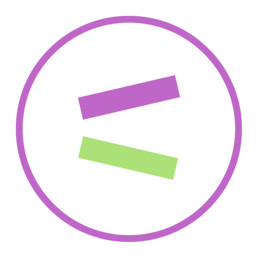
Written by Dual Frequency
Dual Frequency is a teaching resource provider that seeks to promote dialogue in relation to inclusion
This December, Dual Frequency is thrilled to share with you a brand new interactive diversity calendar that can be used in schools, education settings and other organisations to ensure you never miss a significant date in the EDI calendar.
Why is the diversity calendar important?
Because diversity matters, every single day! The more we immerse ourselves in diverse groups, the more we will be able to celebrate positive representation of these groups, and the richer our communities become.
How can you implement the diversity calendar within your organisation?
The diversity calendar includes a mixture of equality, diversity and inclusion related events along with key dates. This is not intended as an exhaustive list. At a glance you can see the key dates that are listed each month, click the date to be signposted to a resource and more information, plus suggestions of how you can celebrate the date.
How does the colour code in the diversity calendar 2021 work?
The calendar is colour coded to the strands of the Equality Act 2010. It is important to value everybody’s contribution to society all year round: far too many communities are so regularly overlooked in the Gregorian calendar. By focusing on the protected characteristics that fall under the Equality Act, our hope is these communities will no longer be overlooked but celebrated in contrast.
If you require the calendar in a different format, such as large text or on an (accessible) yellow background, then let us know and we will do our best to meet your requirements.
How do I get my calendar?
Download yours right now by clicking this link: https://www.dualfrequency.co.uk/diversity-and-inclusion-calendar-2021
If you are in a position to make a donation for your calendar, then we appreciate this. It helps to keep a grassroots organisation like Dual Frequency running and makes a huge difference to our community fund which ensures we can pay our contributors for their time and efforts.

